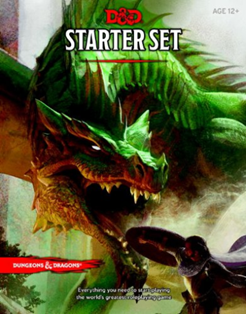 One of the excellent aspects of Lost Mine of Phandelver is that it includes a number of side-quests. These are quests which don’t advance the main storyline that you can get from NPCs you meet.
One of the excellent aspects of Lost Mine of Phandelver is that it includes a number of side-quests. These are quests which don’t advance the main storyline that you can get from NPCs you meet.
Side quests allow a Dungeon Master to present a view of ongoing life in the world. Necromancers investigate buried ruins (and cause problems with wandering zombies), orcs strike from a hidden base, and sages seek knowledge. You can provide as wide a view of the world as you like. Players of computer games like Skyrim and Baldur’s Gate will be well aware of the possibilities available for world-building from side quests.
There are a few notable things about their use in this adventure. First of which is this: Many of them are really short. In a two-hour session, we were able to complete three of the quests, mainly because they’re “travel to this location and have one encounter”. This is a technique that is particularly useful for when you’re designing home adventures.
Why so? Because adventure design takes time, and designing adventure sites that might never be visited is a waste of your time. It’s different for published adventures, where some group out there will find your obscure little quest, but when you’re designing for your own game, you want to spend the most time on stuff you know will be used. Designing one-encounter quests is much easier than designing dungeon systems. Indeed, you can probably just note a few monsters down, list their treasure and determine the environment in which they’re encountered. 3 Ogres in Forest Glade, 1000 gp. There you go! Now I just need a hook to get the players to the ogres.
The hook is important because it’s the main tool of the world-building. If the ogres are menacing merchants on the nearby trade road, that say one thing about your world. If they’re stealing children from nearby towns, that’s another – and you’re describing a much darker and more disturbing world.
The quest also tells the players something about the NPC that gives it to them – a glimpse into their motivations and goals. In Phandelver, the fact that many of the townsfolk want to deal with the Redbrands and the mayor doesn’t is something that all the groups I’ve run Lost Mine of Phandelver for have picked up on, and some groups have even pushed for his removal. Each of the faction contacts in town has a quest relating to their faction, and that lets the players understand what the factions stand for.
Even if the players don’t go on the quest, the hook and the NPC inform the game.
If you’d like to do bigger quests, then a technique many DMs have used is to let the players choose a quest to do at the end of a session. The DM then takes that information to design the next session’s adventure, while hoping the players don’t change their mind!
Because space is limited in the Starter Set, most of the NPCs each give only one quest. If I’m running the adventure in a home game (or designing my own adventure), I’ll have the NPCs give additional quests after the first one is completed. You want to develop your important NPCs, and if one quest leads on to another and another after that, you get that opportunity. The players appreciate them more, because they have recurring interactions with them. If Sildar keeps finding new quests to advance the Lords Alliance in the area, it helps cement his role as the Lords Alliance contact, and also rewards those characters who are members of that faction: they feel they’re doing something useful.
Side quests can have links back to the main plot, but they don’t have to. One of the tricks when employing them is to allow the players the time to complete them. If the main plot is all-important, than all these side journeys can’t be taken. It’s hard to guard the merchant’s daughter for a night when the world ends at midnight! If I do have a criticism of Phandelver’s structure, its that you are exploring these side quests while also looking for a kidnapped dwarf; isn’t one more important?

Yeh, finding the dwarf and Cragmaw is more central. Doing three quick side quests like that was good for advancing the XP, and I think it got us operating as a group a bit more. But all the time I was thinking “Where is Cragmaw Castle, where is the Lost Mine, how come we can’t find them, have we missed something”.
Yeah, I never ran the whole thing, but ran it for about four sessions. Party had trouble finding Cragmaw Castle. Now that I’m running In Volo’s Wake with a new group, I might weave some of the subplots from LMOP into that.
My PCs ignored the side quests saying they would check them out after they solved the main issue of the dwarves and the mine. The only side quest they did was Thunder tree, and only after they finished the mine, and only because one of the players used the pregen character with a tie to Thunder tree.
The lure of the main plot is a major problem with running side quests, and it’s fascinating to see how different groups deal with it. Thanks for posting!